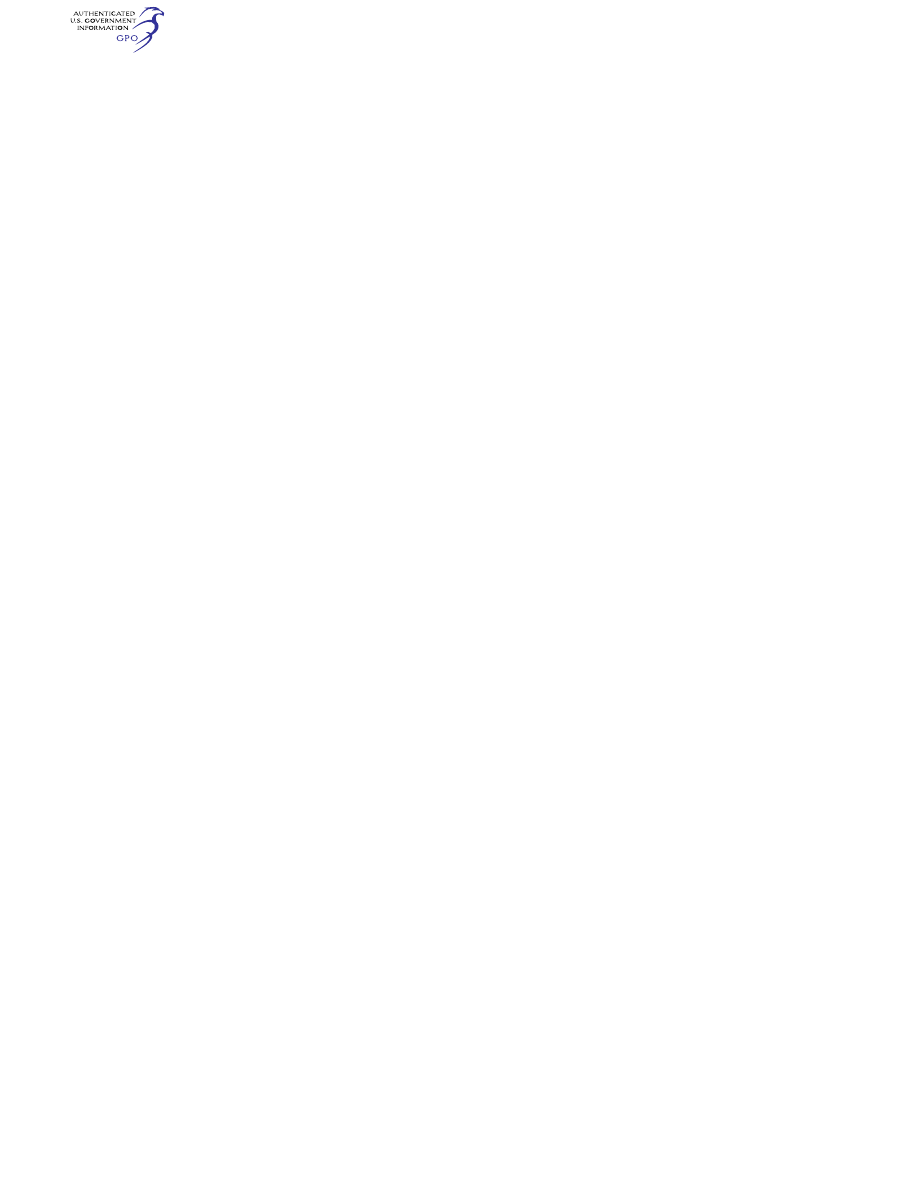
637
Federal Aviation Administration, DOT
§ 29.975
(d) No rotorcraft skin immediately
adjacent to a major air outlet from the
engine compartment may act as the
wall of an integral tank.
[Doc. No. 5084, 29 FR 16150, Dec. 3, 1964, as
amended by Amdt. 29–26, 53 FR 34217, Sept. 2,
1988; Amdt. 29–35, 59 FR 50388, Oct. 3, 1994]
§ 29.969
Fuel tank expansion space.
Each fuel tank or each group of fuel
tanks with interconnected vent sys-
tems must have an expansion space of
not less than 2 percent of the combined
tank capacity. It must be impossible to
fill the fuel tank expansion space inad-
vertently with the rotorcraft in the
normal ground attitude.
[Amdt. 29–26, 53 FR 34217, Sept. 2, 1988]
§ 29.971
Fuel tank sump.
(a) Each fuel tank must have a sump
with a capacity of not less than the
greater of—
(1) 0.10 per cent of the tank capacity;
or
(2)
1
⁄
16
gallon.
(b) The capacity prescribed in para-
graph (a) of this section must be effec-
tive with the rotorcraft in any normal
attitude, and must be located so that
the sump contents cannot escape
through the tank outlet opening.
(c) Each fuel tank must allow drain-
age of hazardous quantities of water
from each part of the tank to the sump
with the rotorcraft in any ground atti-
tude to be expected in service.
(d) Each fuel tank sump must have a
drain that allows complete drainage of
the sump on the ground.
[Doc. No. 5084, 29 FR 16150, Dec. 3, 1964, as
amended by Amdt. 29–12, 41 FR 55473, Dec. 20,
1976; Amdt. 29–26, 53 FR 34217, Sept. 2, 1988]
§ 29.973
Fuel tank filler connection.
(a) Each fuel tank filler connection
must prevent the entrance of fuel into
any part of the rotorcraft other than
the tank itself during normal oper-
ations and must be crash resistant dur-
ing a survivable impact in accordance
with § 29.952(c). In addition—
(1) Each filler must be marked as pre-
scribed in § 29.1557(c)(1);
(2) Each recessed filler connection
that can retain any appreciable quan-
tity of fuel must have a drain that dis-
charges clear of the entire rotorcraft;
and
(3) Each filler cap must provide a
fuel-tight seal under the fluid pressure
expected in normal operation and in a
survivable impact.
(b) Each filler cap or filler cap cover
must warn when the cap is not fully
locked or seated on the filler connec-
tion.
[Doc. No. 26352, 59 FR 50388, Oct. 3, 1994]
§ 29.975
Fuel tank vents and carbu-
retor vapor vents.
(a)
Fuel tank vents. Each fuel tank
must be vented from the top part of the
expansion space so that venting is ef-
fective under normal flight conditions.
In addition—
(1) The vents must be arranged to
avoid stoppage by dirt or ice forma-
tion;
(2) The vent arrangement must pre-
vent siphoning of fuel during normal
operation;
(3) The venting capacity and vent
pressure levels must maintain accept-
able differences of pressure between
the interior and exterior of the tank,
during—
(i) Normal flight operation;
(ii) Maximum rate of ascent and de-
scent; and
(iii) Refueling and defueling (where
applicable);
(4) Airspaces of tanks with inter-
connected outlets must be inter-
connected;
(5) There may be no point in any vent
line where moisture can accumulate
with the rotorcraft in the ground atti-
tude or the level flight attitude, unless
drainage is provided;
(6) No vent or drainage provision may
end at any point—
(i) Where the discharge of fuel from
the vent outlet would constitute a fire
hazard; or
(ii) From which fumes could enter
personnel compartments; and
(7) The venting system must be de-
signed to minimize spillage of fuel
through the vents to an ignition source
in the event of a rollover during land-
ing, ground operations, or a survivable
impact.
VerDate Sep<11>2014
09:06 Jun 28, 2024
Jkt 262046
PO 00000
Frm 00647
Fmt 8010
Sfmt 8010
Y:\SGML\262046.XXX
262046
jspears on DSK121TN23PROD with CFR